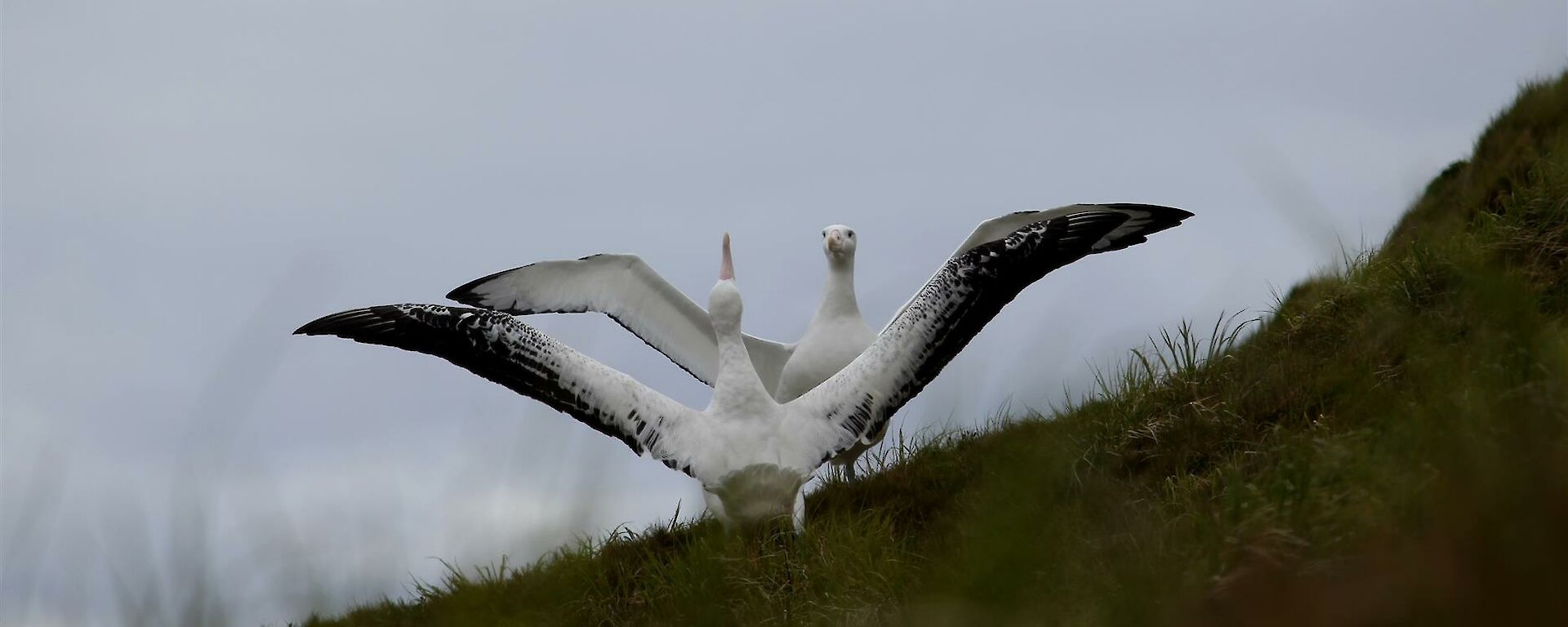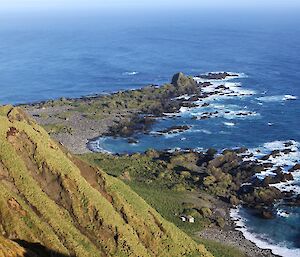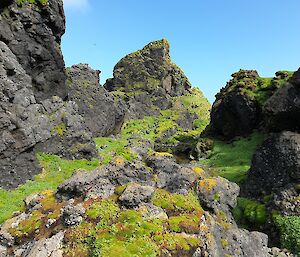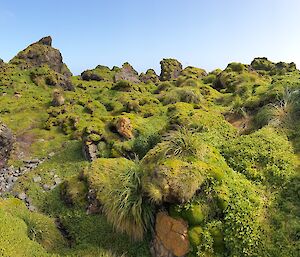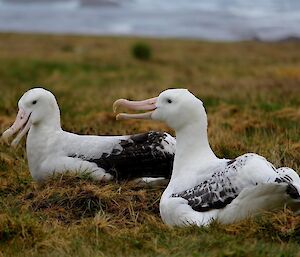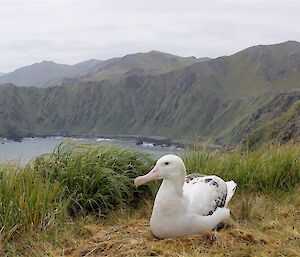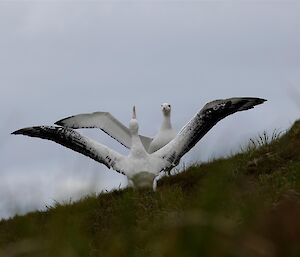Wildlife Ranger Mel Wells is currently one of our three hard working Tasmania Parks and Wildlife Service Rangers on Macquarie Island. Mel knows our magnificent albatross particularly well as she has previously worked on the long running albatross and giant petrel biology research project here. Mel has provided the following perspective on the Macca wildlife, particularly the wandering albatross, and shares her thoughts (and photos) about the wild landscape at Hurd Point at the south of the island. Thanks Mel!
Summer wildlife update
Our summer season on Macca this year is something like 100 days, but the summer season for the breeding wildlife is much shorter. Summer is a very busy time, the island that seemingly goes into a state of hibernation over the winter months turns into a hive of activity as millions of penguins and thousands of seals, albatross and other seabird species return from their winter foraging areas to breed.
The coastal beaches fill with seals, large penguin colonies and giant petrels. Albatross take up residence along the steep tussock slopes and some on the plateau flats. Skua nests are found on the plateau and the coastal terraces in close proximity to penguin colonies. A number of smaller petrel species establish their nests in burrows under the ground or within crevices on coastal rock stacks. Cormorants, kelp gulls and terns can be found atop some of the offshore rock stacks.
One of the tasks of the Tasmania Parks and Wildlife Service Rangers is to carry out wildlife monitoring programs in order to understand long-term population trends of the species on the island. We’ve had a busy couple of months counting albatross, fur seals, Cape petrels and northern giant petrels.
It’s shaping up to be a great year for the wandering albatross (Diomedea exulans) on the island. This year 10 eggs have been laid, which is the highest in a decade. In the 2008/09 summer 13 eggs were laid, but since then the annual average has been less than six. This increase in nests is positive news, particularly after only three eggs were laid last season, the lowest recorded in the 25-year Department of Primary Industries, Parks, Water and Environment monitoring program. While the majority of the nests are in the south-west of the island, birds occasionally breed on the ‘northern featherbed’ — the coastal peat terrace along the west coast. This season there is a nest along the ‘southern featherbed’ where breeding has not been recorded since 1967.
An ode to our pointy south.
Hurd point: a fierce reputation, a weather beaten point, jutting out in the tempestuous south. A hostile environment of extremes. It has endured the most furious of gales and strongest of swells throughout time.
But enter in her core and you will be pleasured by a gentle lure of magic and peace. A serene stillness lingers, a gentle life — in complete contrast to the outside world. Hurd point has a luring energy.
She frightens you to stay away by her sheer power and definition. Yet her life force within is gentle and kind, she offers refuge and respite.
Hurd point is the southern-most tip of the island. It is a place very rarely visited. Tasmania Parks and Wildlife Service Rangers may visit one or two times a year for coastal and escarpment vegetation photo monitoring and fur seal observations. It also happens to be the site of the largest royal penguin colony in the world. It is a spectacular place.
Mel Wells, Wildlife Ranger

